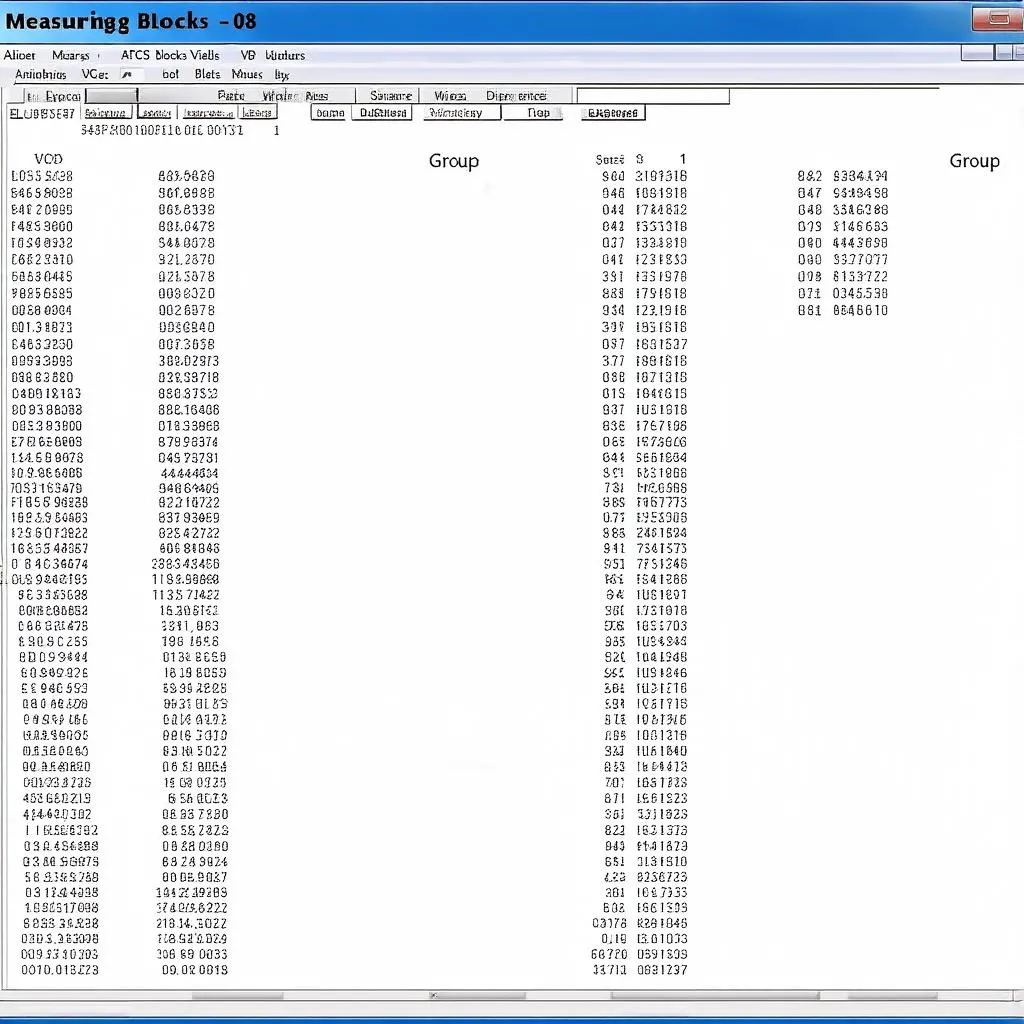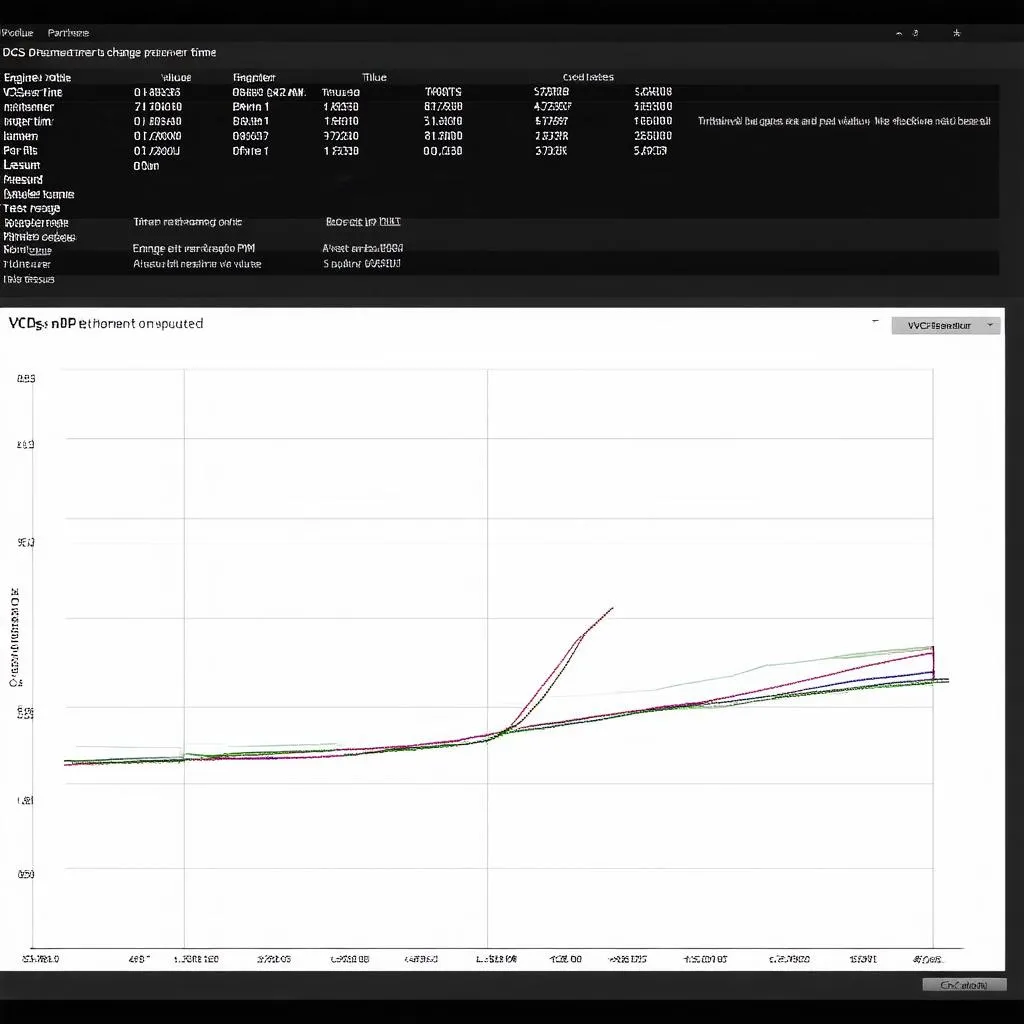VCDS, formerly known as VAG-COM, is an indispensable tool for any professional working with Volkswagen Audi Group (VAG) vehicles. It allows you to delve deeper into your car’s systems, accessing data that would otherwise be unavailable through standard OBD-II scanners. One of the powerful features VCDS offers is “Measure Blocks,” also known as measuring blocks. This guide will equip you with the knowledge to understand and utilize this feature effectively.
What are VCDS Measure Blocks?
In essence, measure blocks are sets of live data points from various sensors and control units within your vehicle. They offer real-time insights into the workings of your engine, transmission, ABS, airbags, and a multitude of other systems.
Imagine them as windows into the intricate operations of your car, providing numerical values that represent parameters such as:
- Engine RPM
- Coolant temperature
- Boost pressure
- Fuel injection timing
- Air mass flow
By interpreting these values, you can diagnose issues, monitor performance, and fine-tune your vehicle’s settings.
Accessing and Navigating Measure Blocks
Accessing measure blocks is straightforward with the user-friendly VCDS interface:
- Connect your VCDS interface to your vehicle’s OBD-II port and turn the ignition on.
- Launch the VCDS software on your computer.
- Select the “Select Control Module” option.
- Choose the specific control module you wish to access (e.g., Engine, Transmission).
- Click on “Measuring Blocks – 08.”
You’ll be presented with a table displaying various “Group” numbers. Each group represents a specific set of data points. To view the data within a group, simply enter the desired group number and click “Go!”
 VCDS measuring blocks groups table
VCDS measuring blocks groups table
Interpreting the Data: A Practical Example
Let’s say you’re troubleshooting an engine misfire. You might access the Engine control module and navigate to Group 001, which typically displays parameters like engine speed, load, and ignition timing. By observing these values, you can identify anomalies that might indicate the root cause of the misfire.
Common Use Cases for Measure Blocks
The versatility of measure blocks makes them invaluable for a range of tasks, including:
- Diagnosis: Pinpoint faulty sensors, actuators, or components by analyzing live data.
- Performance Monitoring: Track parameters like boost pressure and air/fuel ratio to assess engine performance.
- Customization: Fine-tune certain settings within the control modules.
- Adaptation: Reset or adapt certain systems after component replacement (e.g., throttle body adaptation).
FAQs about VCDS Measure Blocks
Q: Where can I find a list of measure block groups for my specific car model?
A: Unfortunately, there isn’t a universal list. The available groups and their meanings can vary between vehicle models and even model years. The best resource is the official factory repair manual for your specific vehicle.
Q: Can I adjust values within measure blocks?
A: While VCDS allows adjustments to some parameters, it’s crucial to proceed with caution. Incorrect modifications can have adverse effects on your vehicle. Always consult reliable sources or seek guidance from experienced professionals before attempting any adjustments.
Tips for Utilizing VCDS Measure Blocks Effectively
- Start with the basics: Familiarize yourself with the common measure block groups related to the system you’re troubleshooting.
- Refer to factory repair manuals: These manuals often provide detailed information about specific measure block groups and their interpretations.
- Log data for analysis: VCDS allows you to log data over time, which can be helpful for identifying intermittent issues or analyzing trends.
- Seek professional help when needed: If you’re unsure about interpreting data or performing adjustments, don’t hesitate to consult a qualified automotive technician.
 VCDS data graph
VCDS data graph
Conclusion
VCDS measure blocks provide a powerful window into the inner workings of your VAG vehicle. By understanding how to access, interpret, and utilize this feature, you gain valuable insights for diagnostics, performance monitoring, and customization. Remember to always proceed with caution, consult reliable sources, and seek professional help when necessary. For a deeper understanding of other VCDS functions, explore the wealth of resources available on CARDIAGTECH. They offer a range of diagnostic tools and information to help you master car diagnostics.
